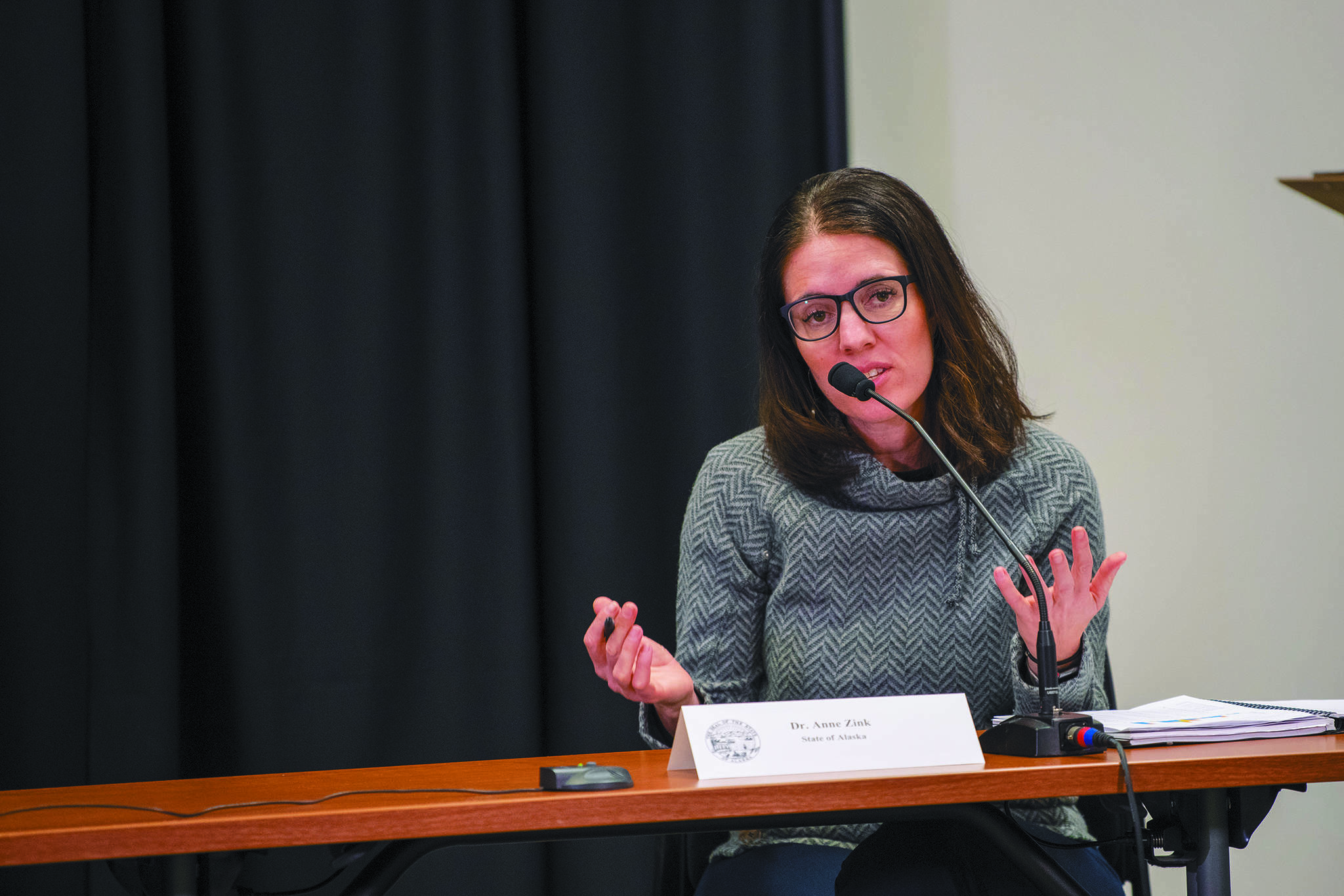By Dr. Anne Zink
Alaska is in a race between the spread of COVID-19 and our efforts to distribute and administer two highly effective vaccines. Our goal is to eventually get the vaccine out to all Alaskans who want it — fast and fair.
We need this to be logistically feasible as we work to reduce the risk of death and illness associated with COVID-19, ensure essential services are maintained and distribute the vaccine equitably. This is a race to save lives and end the pandemic as quickly as possible.
Roughly a month ago, two COVID-19 vaccines were authorized for emergency use by the U.S. Food and Drug Administration (FDA). We were able to view the full data showing how safe and effective there were, including in older individuals, so we were confident in providing the vaccine to Alaskans. Within days, the first shipments of vaccine had arrived.
The race to get shots in arms has been nonstop ever since. Like many states, our vaccine rollout has had bumps, including a difficult-to-navigate scheduling system and a private-public pharmacy partnership that has been slow to vaccinate long-term care facility residents and staff. But we can’t wait for perfect systems. We have had to move quickly and frequently pivot under circumstances that change daily. Despite those hurdles, and the logistical challenges of our vast and diverse state, Alaska has consistently ranked among the top five states for doses administered per capita.
We have teamwork and many Alaskans to thank for that success.
Given the limited national supply, Alaska, like all states, has had to decide who gets vaccine first. These decisions are based on science, ethics, and what’s possible to implement, not on who is most important. Our goal is to use our limited supply to decrease deaths and illness from COVID-19 while preserving key societal functions — in a way that is equitable, transparent, feasible and vaccinates Alaskans as quickly as possible without wasting any vaccine.
Alaska was one of a few states that decided long-term care facilities belonged in our first allocation, followed soon after by Alaskans 65 years and older instead of those 75 and older as recommended by the CDC’s Advisory Committee on Immunization Practices. In making these departures from national recommendations, we considered our relatively small senior population compared to other states, the fact that fewer seniors in Alaska live in nursing homes (Alaska has the lowest nursing home bed rate per capita in the U.S.) and the tremendous burden of disease on this age group (77% of our deaths and 50% of our hospitalizations to date).
Our decisions have been guided by the Centers for Disease Control and Prevention’s Advisory Committee on Immunization Practices (ACIP) and our state’s advisory panel, the Alaska Vaccine Allocation Advisory Committee (AVAAC) as well as public input.
We are currently vaccinating Alaskans age 65 and older (Phase 1b Tier 1), along with health care workers, front-line EMS and fire service personnel, and long-term care facility residents and staff (Phase 1a). How quickly we open vaccination to new groups depends on demand within the current group, the availability of vaccine and how quickly we can administer it. We are constantly onboarding new vaccine providers, working with communities to set up vaccine events, improving systems and shipping vaccine around the state as we receive it.
When we saw vaccine appointments not being filled in Phase 1a, we moved onto to Phase 1b Tier 1 (Alaskans 65+). Because the current group that includes seniors is so large, the next group likely won’t open for some time. When it does, it will include essential workers age 50 or older, people living and working in congregate settings and so on. For more details, visit the vaccine eligibility page.
You may notice different communities moving at different speeds. This depends on what’s best for their community, logistical challenges, and whether they are receiving federal vaccine allocations from the Indian Health Service, the Department of Veterans Affairs or the Department of Defense.
As we’ve seen from the beginning of this response, Alaska is stronger when we work together. As vaccine arrives by plane, boat, helicopter, dog sled and snowmachine across the state, we’ve seen partners pull together for the health and well-being of Alaskans. Communities are setting up clinics, assisting their residents, and in some regions, establishing their own vaccine scheduling systems. Grandchildren are helping grandparents navigate the website and pediatricians and schools are vaccinating elders. Volunteers are helping at large vaccine events and teams of people are helping to answer phone calls to our call center, assisting elders with making appointments as soon as more become available..
The website, covidvax.alaska.gov, and the call line, 907-646-3322, are here to support Alaskans. Leave a message and the team will call you back to help schedule appointments when they are available. Both the call line and website are constantly being improved. The Aging & Disability Resource Centers, 1-855-565-2017, are also available to help with scheduling assistance.
This is a complex process, and as we work hard to improve our systems and get shots in arms, fast and fair, we appreciate the kindness and partnerships we continue to see around the state.
Dr. Anne Zink, M.D., is a board-certified emergency physician and Alaska’s chief medical officer.

